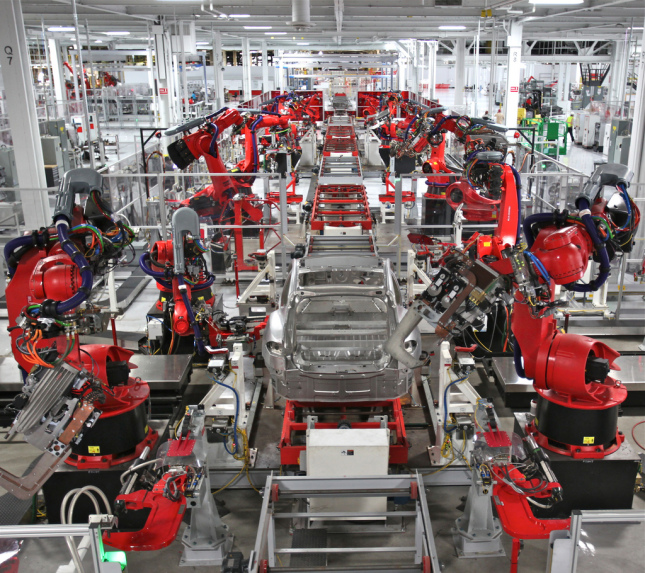Companies have been using workflow and content management for many, many years. In IT we got used to the term Business Process Management (BPM) whenever we spoke of automated process execution. Not so strange since the term BPM was adopted by all the major software vendors and has received a lot of attention as “the” way to achieve process automation and integration.
There are however many different definitions of BPM, where some are technical and others are business oriented. But if we look at the Gartner definition:
Business process management (BPM) is a discipline that uses various methods to discover, model, analyze, measure, improve, and optimize business processes. A business process coordinates the behavior of people, systems, information, and things to produce business outcomes in support of a business strategy. Processes can be structured and repeatable or unstructured and variable. Though not required, technologies are often used with BPM. BPM is key to align IT/OT investments to business strategy
An interesting (and correct) remark by Gartner that technology is not required for BPM, however the general idea (in IT) has been that BPM equals process automation. The business process is summarized to a complete definition until the level that it can be executed as a program. The efficiency gains of automating the business process much exceed the up-front effort to fully identify it and make it executable. An effort which can initially be very large where the cost is only repaid over many instances of the process. So this approach will only work on highly predictable which is highly repeatable. It’s in some way identical to a factory production line where a huge amount of products justifies the initial up-front factory costs.

The Tesla factory production line
Using this approach to discover, implement, and execute complex and dynamic processes will be less economically beneficial. We assume that the less complex a process is, the more likely a lower initial investment is required. And the more often the process will be executed, the greater the financial gain and/or business case.
When we talk about low complexity high volume processes, we can also identify this as so called “routine work”. Routine work is well known and can be planned to a high level of detail. The process uses a general pattern and is done in a very similar way every time. Because routine work is so predictable and repeatable it has been an ideal candidate for successful BPM implementations. Simply due to the fact that the return of investment for routine work is more likely and easily gained.
Agility and Adaptability
Back in 1958 James March & Herbert Simon wrote the management science classis Organizations [2] and concluded that an organization is successful not because it does everything in exactly the same way every time, but because it is flexible enough to adapt and respond to the changes around it. Looking at the present, with changing regulations, new laws, new markets and changing business models this statement seems more true than ever. We therefore can conclude that a rigidly specified organization, that has every process fully planned in detail, will find itself unable to respond to changes.
Maybe we might accept that in real life there is never work that is 100% predictable, nor is there work that is 100% unpredictable. So it seems that the approach to automation of more complex and dynamic business processes requires more flexibility.
In 1992 the legendary business management guru Peter Drucker explains that matching a company’s strengths to the changes that have already taken place produces, in effect, a plan of action. Competitive advantage comes not from steely corporate rigor, but from organizational agility and the adaptability of support systems. [4]
Unpredictable work
Scientific management as once defined by Frederick Winslow Taylor has been at the heart of business process automation to date. And we have seen how it works for predictable and repeatable processes since they are an ideal candidate for executable BPM. But not all work is predictable and many organizations hold processes which are even unpredictable. When we talk about actions and events in processes being unpredictable, we mean that the sequence of human acts is not known in advance, and the course of the process may vary greatly for every instance. We can easily think of examples like medical care, law enforcement and complex industrial and financial processes.
Rise of the Knowledge Worker
Whenever we read up on the knowledge worker terminology we always come across one individual, namely management guru Peter F. Drucker. Drucker made the first reference to knowledge work in his 1959 book Landmarks of Tomorrow. He loosely defined a knowledge worker as “someone who knows more about his or her job than anyone else in the organization.” What is important is that Drucker already then understood the uniqueness of the job that a knowledge worker performs.

Peter F. Drucker
Drucker predicted during the 90’s that that the most valuable asset of a 21st-century institution (business or non-business) will be its knowledge workers and their productivity [5]. He even wends further and claimed that the productivity of knowledge and knowledge workers is likely to become the decisive competitive factor in the world economy [6].
So even back then there was already an understanding by business management leaders that the most valuable assets during the industrial revolution were a company’s mass production equipment. Nowadays we can recognize high volume business processes executed in BPM as a form of mass production. Upfront investment which generates value overtime by repetitively producing the same expected result. So if we recognize common grounds between industrial mass production and BPM production work nowadays, what can we say about automation knowledge work in the present or near future? Keeping in mind that Davenport more recently (2005) expresses the importance of knowledge-worker productivity stating that “Within organizations, knowledge workers tend to be closely aligned with the organization’s growth prospects [7]. So with this in mind, how can we efficiently support these knowledge workers ?
Today’s jobs are more dynamic, more ad hoc and require more skills and interaction with other specialists. Besides that, the amount of information available and necessary for a single worker has increased dramatically. So knowledge work cannot be matched on a traditional rigid business process (where work is performed according to a detailed plan prepared in advance). Because as knowledge work proceeds, the sequence of activities depends on the situational information. This is the nature of knowledge work. As the available information or external influences change the process has to be dynamic. It is not simply a matter of plan and execute but a continuous dynamic set of activities in an adaptive flow of execution. And while rules like regulations, laws and organization standards will certainly constrain the actions of the knowledge worker no plan is ever final until the end is reached.
Case Management
To digitally support the knowledge workers to dynamically act in their cases, we need some sort of case management solution. A way to dynamically start activities like processes and tasks throughout the case lifecycle. In such a way that the knowledge worker can act on the information available to determine which actions to take. The case management solution should therefore be “information” driven.

Information drives the case
Forrester’s [3] defines case management as a highly structured but collaborative, dynamic, and information-intensive process driven by outside events requiring incremental and progressive responses from the business domain handling the case.
(Unstructured) data like documents in an enterprise content management (ECM) system and processes in business process management (BPM) suites are clearly key requirements for any case management offering. But only processes and content are insufficient. By adding advanced business rules and clear business analytics in the mix, you get the 4 essential components of a case management solution.

The 4 essential components for case management
Advanced business rules allow for guidance to make sure certain actions are made available or withdrawn during the case lifecycle. And dashboards with case analytics allow for real-time insight on all running cases.
These 4 core components combined with good (knowledge) user experience and the ability to integrate with your service oriented landscape are basically the case management product you want. Add some policies management and even some social collaboration and you have a set of existing proven technologies, which together have a very interesting proposition for the modern knowledge worker needs.
References:
- Keith D. Swenson; Mastering the Unpredictable: How Adaptive Case Management Will Revolutionize the Way That Knowledge Workers Get Things Done; 2010
- James G. March & Herbert A. Simon; Organizations; 1958
- Connie Moore, Craig Le Chair & Ralph Vitti (Forrester Research); Dynamic Case Management, an old idea catches new fire; 2009
- Peter F. Drucker; Planning for Uncertainty; 1992
- Peter F. Drucker; Knowledge Worker Productivity, The Biggest Challenge; 1999
- Peter F. Drucker; Rise of the Knowledge Worker; 1998
- Thomas H. Davenport; Process Management for Knowledge Work; 2005



